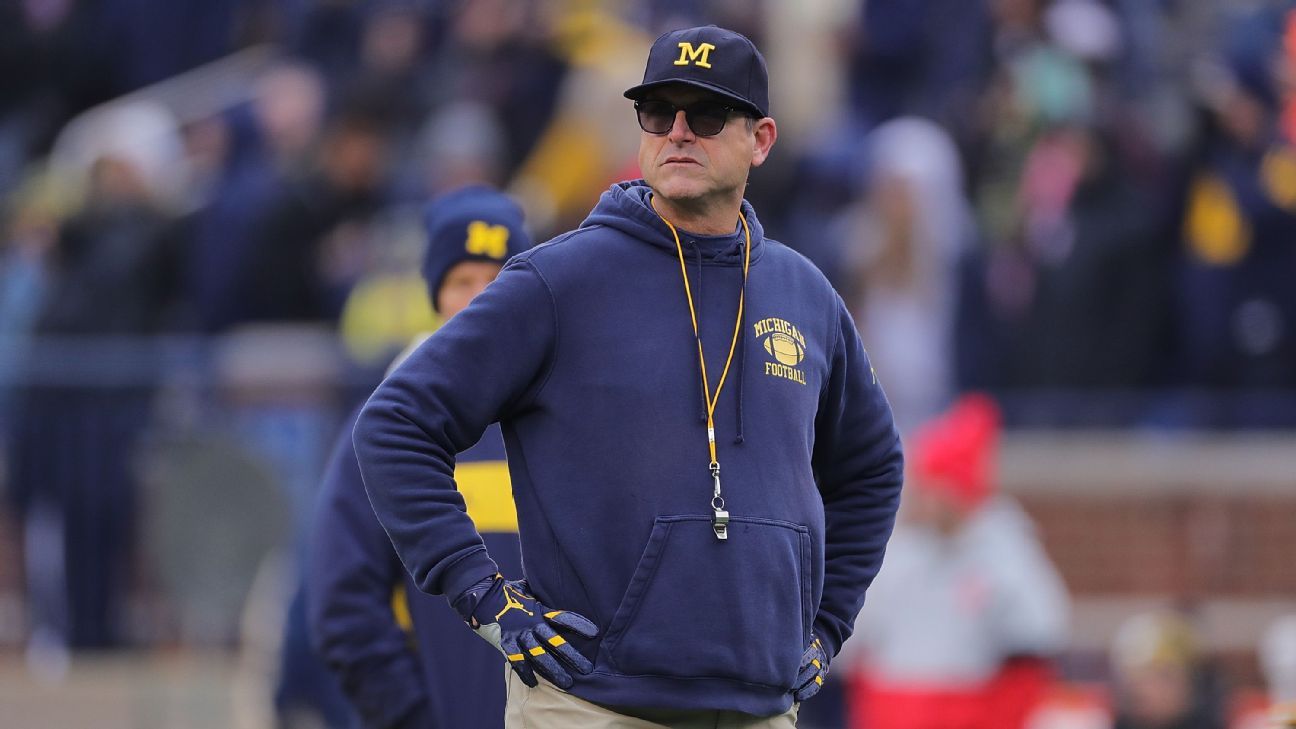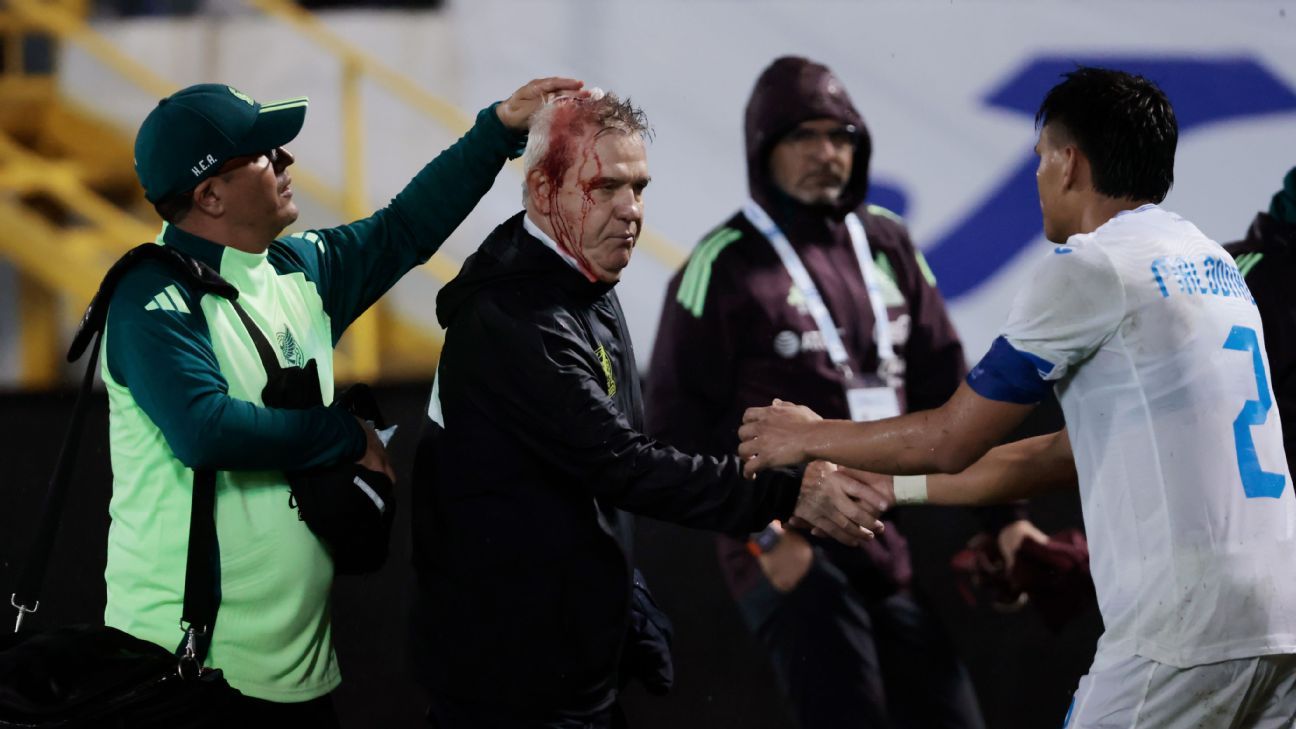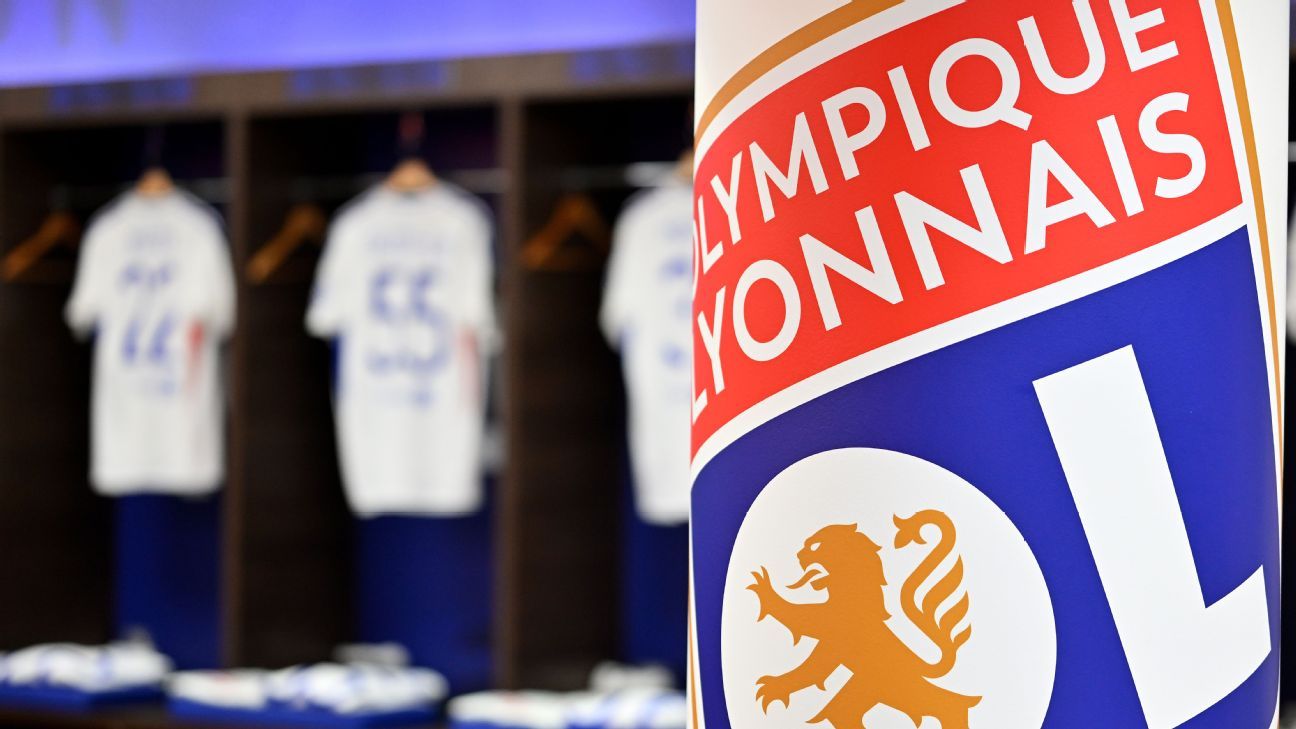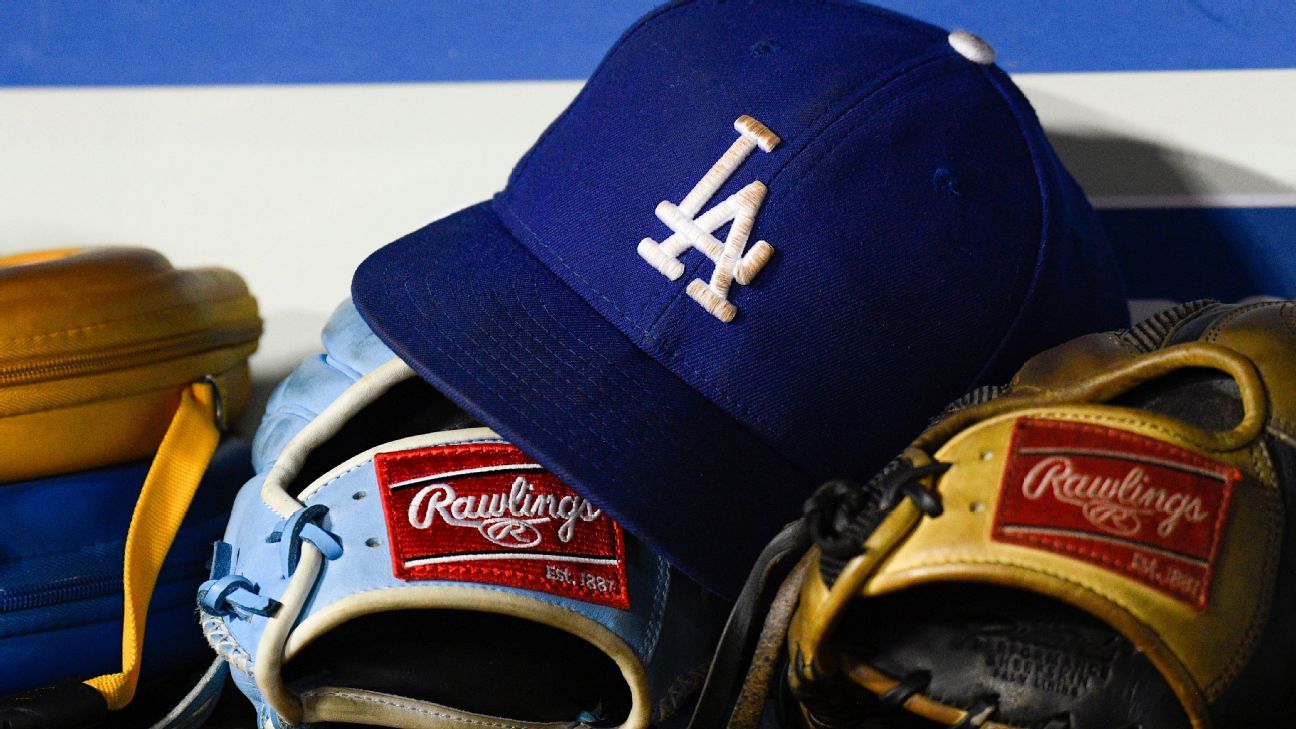
When you're better than just about everyone ... but not your rival, your rival defines your perspective.
By December 1978, Tom Osborne had proved himself a worthy successor to Bob Devaney at Nebraska. In six seasons, he was 55-15-2, with four top-10 finishes. Against top-10 teams not named Oklahoma, he was 6-2. After reviving Devaney's tenure when he became offensive coordinator a decade earlier, Osborne had maintained a hold on the Huskers' elite status as head coach.
He lost his first five games to Oklahoma, though, and by an average of 20 points. OU found a new level of dominance with the installation of the wishbone offense and the appointment of Barry Switzer as head coach. The Sooners claimed national titles in 1974 and 1975; they were otherworldly, and Nebraska was merely elite.
The Huskers finally cleared the OU hurdle in 1978, beating the Sooners in Lincoln and positioning themselves for a shot at the national title. But they were upset by Missouri the very next week. Their consolation prize: an Orange Bowl bid against ... Oklahoma. The Sooners won, of course, then won again in 1979 and 1980.
"There was enough unhappiness here that [I thought] maybe I ought to look for a job," Osborne said, and he seriously considered going after the Colorado job for a fresh start after the 1978 season.
Your rival defines your perspective. John Cooper was granted, by today's standards, a pretty lengthy leash at Ohio State. Predecessor Earle Bruce generated eight top-15 finishes in nine years, but Cooper went just 35-21-3 in his first five seasons (1988-92).
He went 10-1-1 in his sixth year, but the Buckeyes' lone loss in 1993 was to Michigan. That made him 0-5-1 against the rival Wolverines. Michigan again knocked the Buckeyes from the ranks of the unbeaten in 1995 and 1996, and when OSU finally got past UM in 1998, it came in a season in which it had already suffered a historic upset loss to Michigan State.
Cooper built one of the most impressive programs of the 1990s. Ohio State won 10 or more games five times in six years, and the talent on those teams -- first-round picks Orlando Pace, Eddie George, Terry Glenn, Dan Wilkinson, Robert Smith, Joey Galloway, Alonzo Spellman, Korey Stringer, David Boston, Shawn Springs, Andy Katzenmoyer, Rickey Dudley, Antoine Winfield, Ahmed Plummer and Corey Powell -- was ridiculous. But like Osborne, Cooper couldn't figure out how to surpass his main rival.
Osborne rallied, of course. He beat OU three straight times from 1981 to '83 and crafted what was considered one of the best teams of all time in 1983 before an Orange Bowl upset loss cost him a national title. After losing another four in a row to OU as the Sooners enjoyed a late peak under Switzer, he finally got the permanent upper hand. Nebraska won nine in a row against OU and won or split the national title in 1994, 1995 and 1997.
Cooper never cleared the hurdle. Despite starting seasons 9-0-1, 11-0, 10-0, 10-1 and 8-0, he never found the elusive national title. To add salt to the wound, Michigan split the 1997 title with Nebraska. With a down year in 1999, Cooper was let go after 13 years in charge.
Average SP+ rating, 2014-present:
1. Alabama (32.5)
2. Ohio State (28.5)
3. Clemson (27.5)
4. Oklahoma (25.0)
5. LSU (24.3)
6. Georgia (22.8)
7. Michigan (21.4)
8. Auburn (20.0)
9. Penn State (19.7)
10. Notre Dame (19.4)
11. Washington (19.3)
12. Wisconsin (19.0)
13. Florida (17.2)
14. USC (16.4)
15. Utah (15.0)
Your rival defines your perspective. Michigan's hire of Jim Harbaugh has been an unquestionable success. A former Bo Schembechler quarterback in Ann Arbor, Harbaugh has gone 47-17 in five seasons; in the previous seven years, Michigan had gone 46-42. If Harbaugh goes 0-12 in each of the next two seasons -- call me crazy, but I'm guessing he won't -- he'll still have the better seven-year record. He has three top-15 finishes (with a chance at a fourth), and that's two more than Rich Rodriguez (2008-10) and Brady Hoke (2011-14) have combined.
Harbaugh hasn't beaten Ohio State, though. He came relatively close only once. Winners of nine of 10 in 2015, the Wolverines welcomed the Buckeyes to Ann Arbor and got walloped by 29. Winners of 10 in a row in 2018, they went to Columbus and lost by 23. This past Saturday, they had, after a slow start, won seven of eight and risen to 10th in the AP poll. Ohio State won by 29.
Michigan's revamped offense, which has risen to 20th in offensive SP+ (it was 72nd a month into the season), averaged 8.9 yards per play, with an excellent 53% success rate, in the first half against a Buckeyes defense that came into the week ranked first in defensive SP+. But thanks to miscues and a small dose of fumble luck, the Wolverines found themselves trailing by 12. When the offense inevitably slowed down, the game quickly got out of hand because of Ohio State's otherworldly offense. In the past two seasons, Michigan defensive coordinator Don Brown's defense has allowed an average of 16 points per game against teams not named Ohio State and 59 points per game against the Buckeyes.
Michigan will have interesting options for replacing senior Shea Patterson at quarterback, and its leading rushers are a freshman and redshirt freshman. There isn't a senior to be found in the wide receiver corps, and there are only a few impact seniors on the defense. The offensive line will need some retooling, but the Wolverines absolutely look the part of a top-10 team in 2020. But Ohio State might be a top-one team.
Is Harbaugh an Osborne or a Cooper? There's no way for us to know the answer at the moment. All we know is that few teams can surpass the product Michigan has put on the field the past five season, but the rival from Columbus is one of them. Somehow, the Buckeyes have thus far gotten better since Ryan Day succeeded the historically successful Urban Meyer.
Harbaugh has rebuilt Michigan back to the level it established for most of the 1980s and 1990s. But the Buckeyes remain on a different plane of existence, and Harbaugh will continue to be judged harshly for that until something changes.
What it took for the CFP to become Bama-free
The Iron Bowl wasn't a win-and-you're-in situation for Nick Saban and Alabama on Saturday. A victory at Jordan-Hare Stadium, however, would have given the Tide an 11-1 record and a quality win and would have assuaged concerns about backup quarterback Mac Jones' ability to lead the team in the absence of injured star Tua Tagovailoa.
Bama was fifth in the CFP rankings heading into the weekend, and a win over a team that both LSU and Georgia barely bested might have been enough to fend off whatever conference title bumps a 12-1 Utah or Oklahoma/Baylor would have received.
It didn't happen. Somehow. Alabama enjoyed a 45% success rate to Auburn's 35% and outgained the Tigers by 161 yards (1.2 per play). Jones bested Auburn's Bo Nix play for play, and Najee Harris rushed 27 times for 146 yards. But Auburn scored touchdowns on a pair of pick-sixes -- one plucked off of Harris' back in the Auburn end zone and returned 100 yards -- and benefited from unlikely field goal events: Alabama's Joseph Bulovas' miss of a game-tying 30-yarder with two minutes left (granted, a key missed field goal is not the least likely occurrence of the Saban era) and Auburn's Anders Carlson's four bombs of 43-plus yards. Carlson was 4-for-10 on field goals longer than 40 yards heading into the Iron Bowl but went 4-for-4 when it counted.
Throw in a game-clinching penalty -- a wonderfully high-schoolish punt gimmick that confused Alabama into committing illegal participation -- and you have a wacky concoction that befits a rivalry game upset. Bama's CFP odds, per ESPN's Allstate Playoff Predictor, went from 46.4% at the beginning of the day to 0.6% at the end of it.
This will be the first CFP, then, that doesn't feature a team from Tuscaloosa. And because there is always a run of "Dynasty over?" think pieces and radio segments in the days following a Bama loss, it probably goes without saying that we'll be starting that cycle anew this week. It's pretty incredible, though, to step back and realize what it took to keep the Tide out:
• A run of injuries in fall camp and early in the season rendered what was supposed to be an experienced and dominant front seven more reliant on freshmen than ever under Saban.
• After serving as one of the last elite programs to rely on Big Burly Manball as its major offensive philosophy, Ed Orgeron's LSU team finally put together the right pieces for full-on modernization this season and ignited.
• That LSU offense surged to second in offensive SP+ and put up 46 points and 559 yards on Alabama in Tuscaloosa. All of it was needed (Bama scored 41), and much of the output came in the form of running back Clyde Edwards-Helaire running through front-seven arm tackles.
• Late in the first half of the LSU game, Bama suffered probably the worst two-minute span of Saban's tenure, giving up two Edwards-Helaire touchdowns in 20 seconds to turn a six-point deficit into a 20-pointer. The Tide made up 15 of those points but couldn't get over the hump.
• On what was supposed to be his final drive of the game against Mississippi State a week later, Tagovailoa, already slowed by an ankle injury that had him limping through the LSU game, suffered a freak hip injury and was lost for the season.
• See all the glorious Iron Bowl ridiculousness above.
Perhaps Saban was lucky from an injuries and/or "getting the breaks when you need them most" standpoint through the years, and this season was the comeuppance. But it took a huge run of key injuries, a perfectly timed surge from a rival and some good old-fashioned Iron Bowl nonsense to officially knock the Tide out of a potential spot in the final four. And they're still going to end up with a cushy bowl spot and, most likely, a top-10 finish. Dynasty over? Not so fast, my friend.
I don't want to understate this, though: It is undoubtedly a weird time for Alabama.
Clemson has a chance to win its third national title in four years. Georgia, led by former Saban protege Kirby Smart, has surpassed the Tide defensively (for now, at least). And now another conference rival, LSU, has surpassed them offensively (again, for now). These two SEC foes can match Alabama's athleticism as well as any team can, and they very much have their respective acts together at the moment. Plus, although next season's Bama squad will be as talented as ever from a recruiting standpoint, it will be breaking in a huge new set of offensive skill-position stars and hoping for a defensive surge that never really had a chance to happen this season.
These are, to be sure, Bama problems. Oh, no, we're merely ONE of the most likely national title contenders in a given year and not THE most likely. Bring me some garments to rend. But while the dynasty might not be over, it is absolutely under more stress than normal. And that isn't likely to change in 2020.
Utes or Sooners (or Bears)?
First things first: Both Utah and Oklahoma have some work to do before they can officially declare themselves deserving of CFP bids. SP+ says Utah has a 66% win probability against Oregon in the Pac-12 title game, and OU is at 64% against Baylor in the Big 12 Championship, but that means there's only a 42% chance that they both win. Hell, there's a 12% chance that they both lose.
That said, it's a pretty logical time for these two teams -- their fan bases, at least -- to start bickering about who has a better playoff case. After all, they ranked sixth and seventh in last week's CFP vote, No. 5 Alabama lost, and No. 4 Georgia is an underdog this week. Baylor isn't far behind -- the Bears were ninth last week -- and No. 8 Minnesota lost too.
I have two general rules that I try to follow when maneuvering between the confusing worlds of "best" and "most deserving" in the playoff debate. (Granted, this maneuvering is made more difficult when the CFP committee insists that it is picking the "best" teams when it is, for the most part, actually picking the most deserving.)
My rules are pretty simple:
1. If the résumé stands out, it stands out.
2. If it doesn't, let's go with who we think would win.
If you're an unbeaten power conference team, your résumé stands out and you're in the field. Obviously. So if Ohio State, LSU and/or Clemson win Saturday, they're clearly in. LSU's and Ohio State's respective strengths of schedule will be good enough next Sunday morning that they're in with losses too. And Georgia is in with a win over LSU.
Maybe those four teams will make up the CFP field. But things get blurry if LSU indeed beats UGA and leaves a spot open. (Things get even blurrier in the unlikely case that Virginia beats Clemson in the ACC Championship.)
There are plenty of wild scenarios still on the table: Two-loss Wisconsin gets in with a win over Ohio State and other falling dominoes! Two-loss Georgia gets in with an SEC championship game loss because the other contenders all lost! But there's indeed a solid chance that the fourth bid will come down to Utah vs. the Oklahoma/Baylor winner.
Because we'd have to pretty seriously parse their résumés to figure out whose is superior, let's step back and ask ourselves Question No. 2 above: Who would beat whom? Let's go to the tale of the tape to help us figure things out.
• SP+ ranking: Oklahoma sixth, Utah seventh, Baylor 14th
• SP+ trend: Utah's rating has risen by 5.5 adjusted points per game since the midway point of the season, Baylor's has gone up 2.1 points, and Oklahoma's has gone down 1.6 points
• SP+ win probabilities (trends not taken into account): Oklahoma 53% vs. Utah, Utah 61% vs. Baylor
• Offensive SP+ rating: Oklahoma 48.0 adjusted PPG (first), Utah 38.6 (10th), Baylor 36.2 (17th)
• Defensive SP+ rating: Utah 14.2 adjusted PPG (sixth), Baylor 16.6 (15th), Oklahoma 23.6 (41st)
It's hard to put too much stock in trend data with college football -- the season is too short, and the sample is too small -- but if there's any relevant trend here, it's Utah's rise. The Utes have been good all season, but since their upset loss to USC in Week 4, they have gone on a rampage. They have won eight games in a row, and only one (a rugged 33-28 win at Washington) was by fewer than 25 points. They are increasingly well-rounded.
Meanwhile, in a 34-16 Bedlam win on Saturday in Stillwater, OU put together its first well-rounded, contender-worthy performance in nearly a month and a half. Baylor has been bouncing between dominance (road wins by 19 points at Kansas State, 18 at Oklahoma State and 55 at Kansas, plus basically everything about the first half of the OU loss) and stuck-in-second-gear performances (three-point home wins over Texas Tech and West Virginia, plus basically everything about the second half of the OU loss).
SP+ thinks OU takes down Baylor about two-thirds of the time on a neutral field and still has the slightest of edges over Utah. Personally? I lean Utes. I think their upward trend is real.
Too many bowls? Psshh, not enough bowls.
Exhibit A:
Head Coach Will Healy and @CharlotteFTBL celebrating bowl eligibility for the first time. #ClubLit @NCGridiron #NCCFB pic.twitter.com/lNhtDyTtDj
— Brian Barnes (@NCGridironNews) November 24, 2019
Will "Scuba Steve" Healy just made the Bahamas Bowl announcement.
"Nobody's going to have more fun on a bowl trip than we will."#GOLDstandard | #EstablishTheFUN pic.twitter.com/gg4YA8EvEO
— ????????? ???????? (@CharlotteFTBL) December 1, 2019
Exhibit B:
IT. IS. HAPPENING.
The Golden Flashes win three straight to close their season and are bowl eligible for the first time since 2012! #FlashFAST | #BTA
?: https://t.co/vYBytm8KU8 pic.twitter.com/tfYqsEg7uT
— Kent State Football (@KentStFootball) November 29, 2019
Can't understate how good of a job @TheOC_CoachLew did this year with @KentStFootball, which became bowl-eligible today. Brutal schedule, lot of historic/institutional obstacles and still finished strong to get to six wins. At 33, Lewis is a coach on the rise.
— Adam Rittenberg (@ESPNRittenberg) November 29, 2019
⚡️⚡️⚡️⚡️⚡️
Love the CULTURE our #FlashFAST ⚡️Family has created!!
Just getting started!#BeTheA1pha ?
⚡️⚡️⚡️⚡️⚡️ https://t.co/ct9RzJnpLx
— ⚡️ Sean Lewis ⚡️ (@TheOC_CoachLew) November 30, 2019
Maybe my single favorite genre of stories in a given college football season is Mid-Major Team Gets To Six Wins And Celebrates Like It Won A Damn National Title.
It was a huge deal when Chris Creighton willed Eastern Michigan to its first bowl in 29 years in 2016. It was an even bigger deal when Doug Martin and New Mexico State won three of their last four games to reach 6-6 and a bowl for the first time in 57 years. Their crowd rushed the field after beating South Alabama to clinch 6-6, then rushed the Arizona Bowl field four weeks later after beating Utah State. Martin cried, just as Georgia Southern's Chad Lunsford did last winter after the Eagles beat EMU in the Camellia Bowl to complete a 10-losses-to-10-wins single-year turnaround.
The deck in the FBS is stacked dramatically in favor of the big schools and historic powers. That's never going to change. But for anyone who complains that there are too many bowls, and they used to mean something, but now we're all just championing mediocrity, know that if there were fewer bowls, we wouldn't have the Will Healy videos above, we wouldn't have reason to celebrate Sean Lewis, and we wouldn't have the Arizona Bowl and Camellia Bowl teams, and we would be so, so much worse off for it. Go 49ers, and go Golden Flashes.















 Phone: (800) 737. 6040
Phone: (800) 737. 6040 Fax: (800) 825 5558
Fax: (800) 825 5558 Website:
Website:  Email:
Email: 






